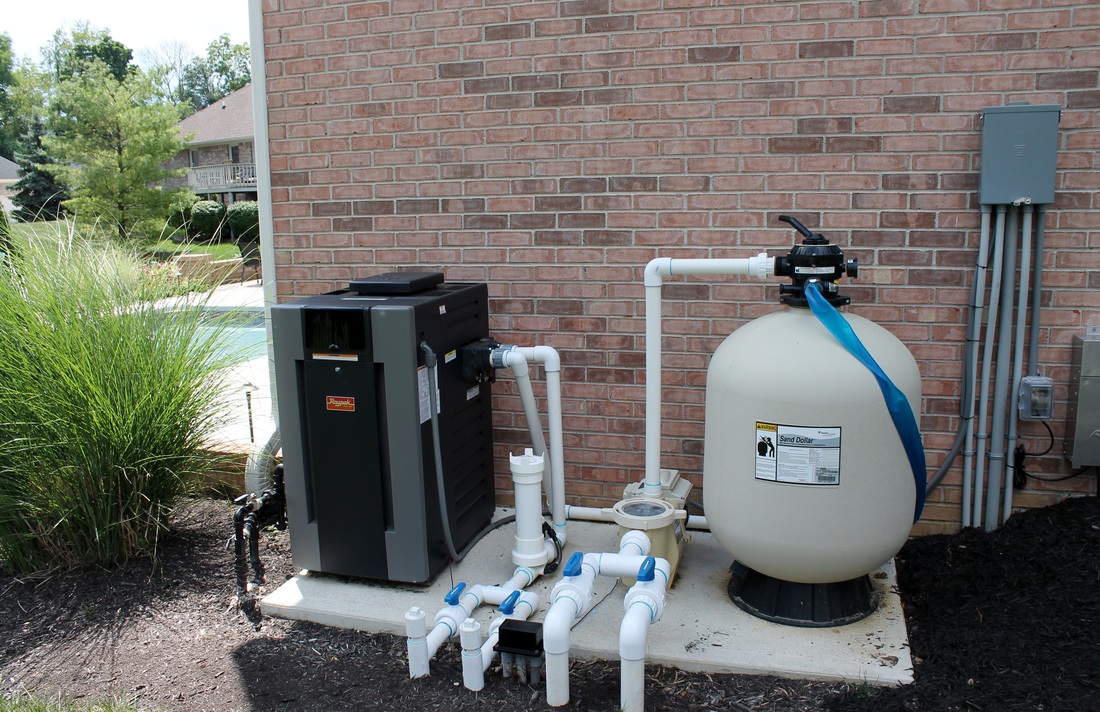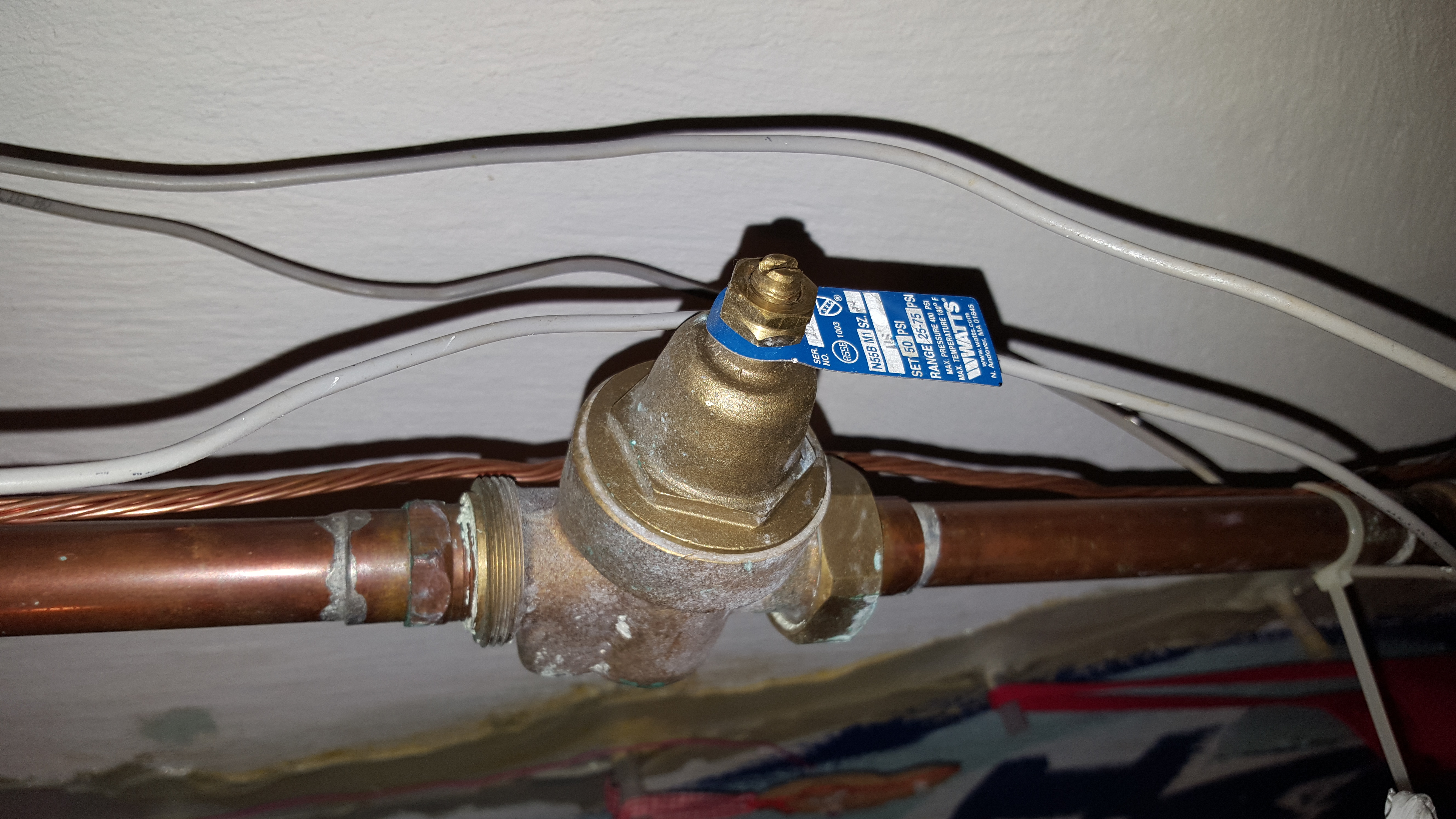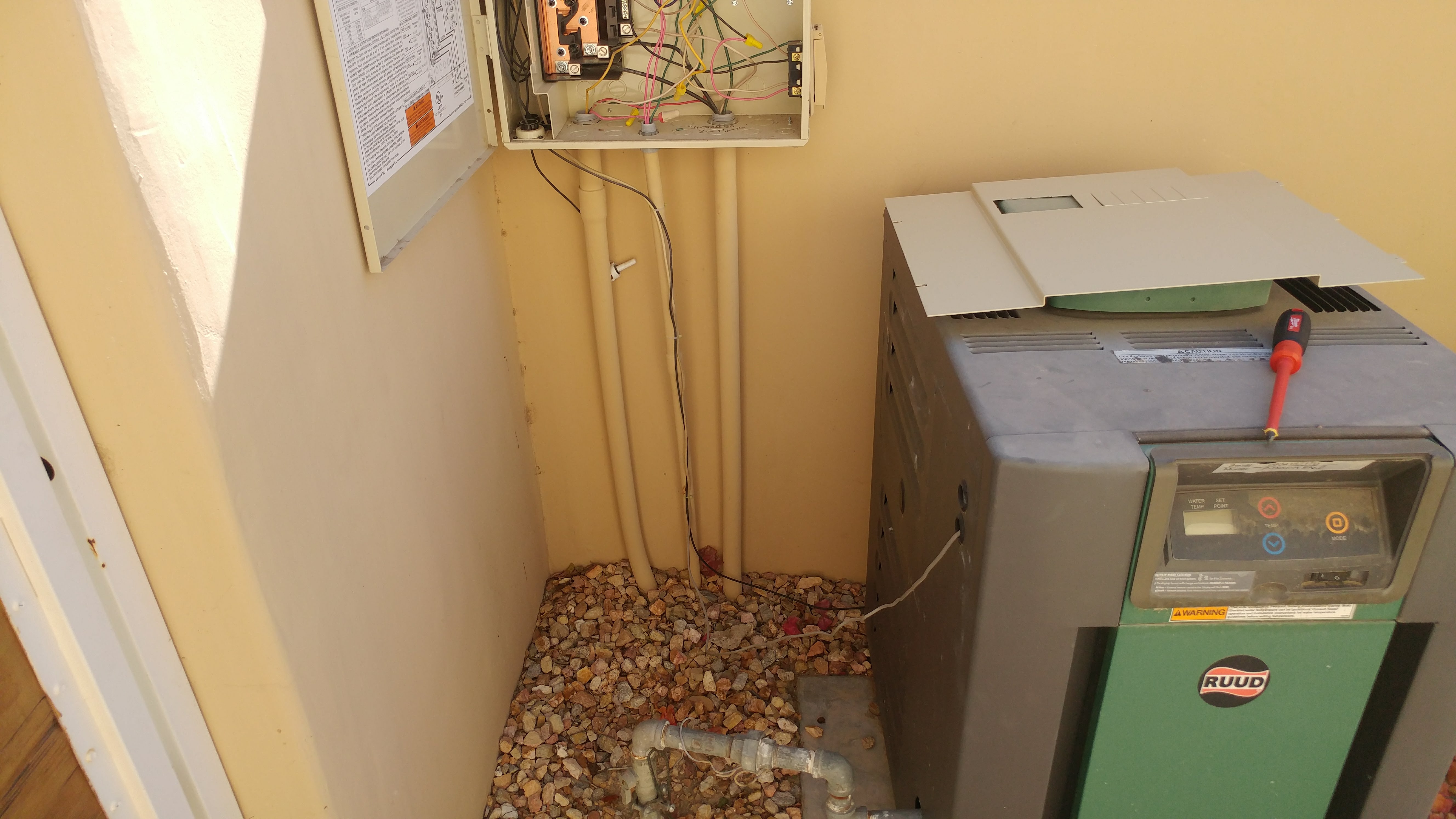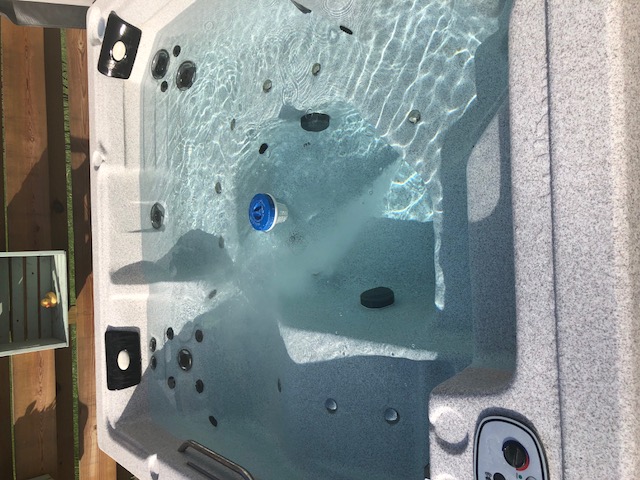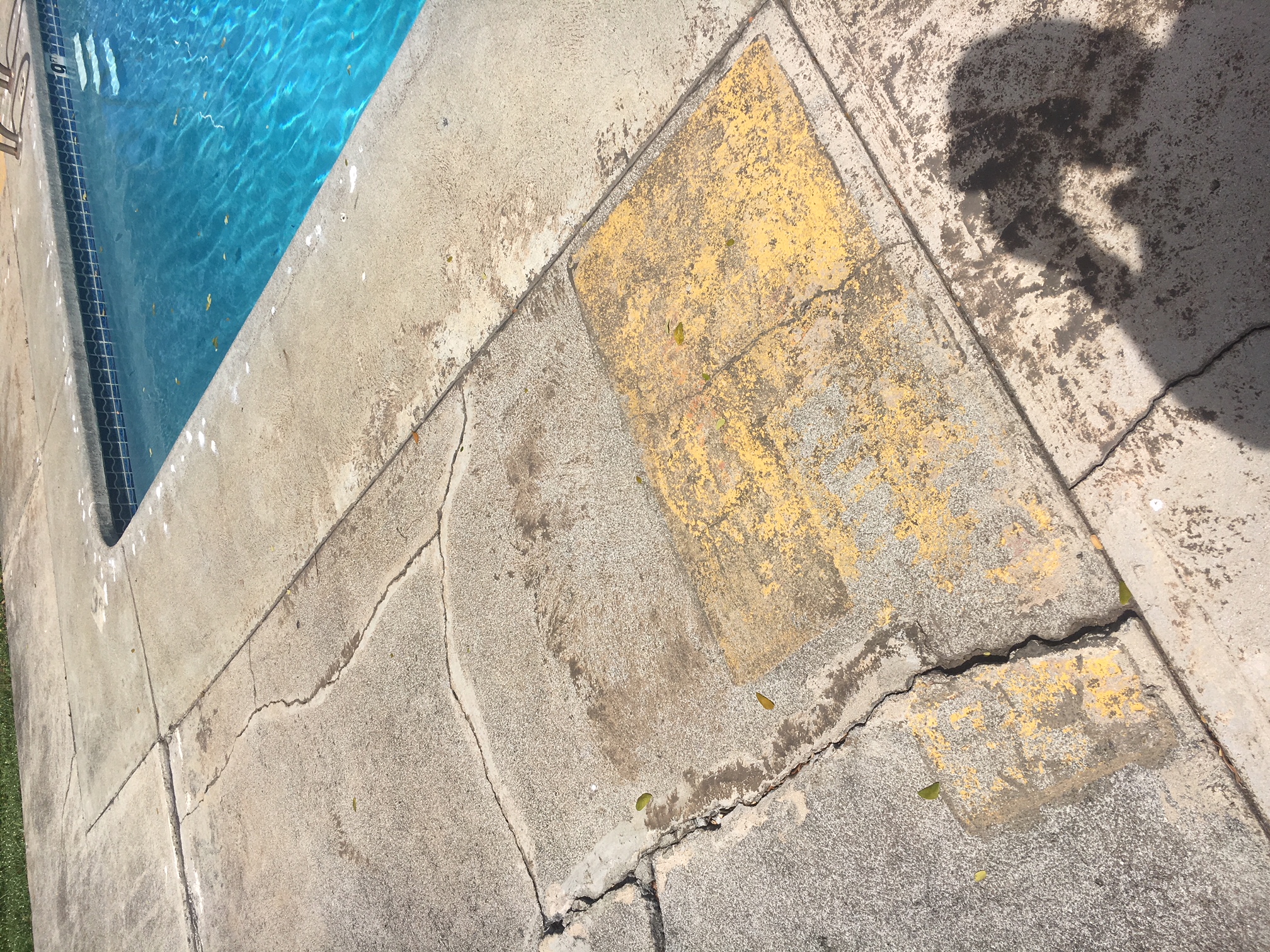Pictured is a typical pool filtration system . It had an electric motor attached to an impeller that forces pool water through a strain pot, into the filter and then back into the pool. This filter consists of a tank filled with sand, which is considered to be the least efficient with a multi-port valve that allows the user to backwash the filter -forcing water backwards through the lateral under drain before discharging it outside the pool. Systems are normally designed to turnover pool content every 6 hrs.
I read two articles to complete the course of How to Inspect Pools and Spas. They were Pool Water Pathogens and Pool Alarms. These articles and the course content stress the need for safety features at all pools. It is imperative that a pool has the proper water chemistry. Many people can get sick from just one person spreading his germs in the pool.
Concerning the pool/spa course, I took a picture of copper supply line piping that was interior to a home and fed a pool system. Plumbing lines for a pool system can be made up of copper, galvanized steel, ABS, or PVC. In my area, Missouri, we commonly see Schedule 40 PVC used exterior to the home when feeding pool and spa systems. The course states that Schedule 40 is rated for temperatures below 100F, and so heated swimming pools will need to use CPVC, PEX, or PB plastic pipe.
I read an article titles “Lead Facts for Inspectors”. Municipalities are becoming very strict on testing and reporting requirements and inspectors need to be careful to work their disclaimers and report findings appropriately. I enjoyed the “Advice for clients concerning lead paint” section and will continue to offer advice on maintenance for homes where lead paint may have been uses at one time.
The inspector noted the deck tiles had cracked mortar joints. The cracks in the mortar joints will allow moisture to penetrate between and under the deck tiles. If moisture is allowed to penetrate under the deck tiles, the deck tiles may becomes loose and separate from the pool deck.
The chemical composition of the pool water is the most important aspect of maintaining a swimming pool. If the chemical composition is not correctly maintained, several issues may occur with the pool. Corrosion of the pool equipment may occur, the pool finish may become damaged and the repairs could become costly.
While inspecting the grounding and bonding aspects of pools, you are not only looking at the electrical components, but also the non electrical metallic components of the pools construction and its surroundings. Bonding is just as important in order to prevent electric shock.
Areas that have high water tables can have issues with pools popping. Its important to have properly functioning hydrostatic pressure relief valves in place to prevent this issue. If the relief valve gets clogged or someone forgets to open the valve, you could be left with an unexpected above ground pool.

The attached picture shows damaged pool coping. Such a condition is dangerous because there are sharp edges which someone could be seriously injured by. additionally, the broken portion of the coping on the top can allow water to sit against the concrete which can allow further deterioration.

After going through this training regarding the inspection of pools and spas i was surprised to learn that there had previously been so many incidents where a person was injured as a result of the drain locations. its clear to me that checking to be sure the proper covers are installed should be a top priority for inspectors and homeowners alike.
A pool cover is a great investment. The cover can serve multiple purposes including; safety barrier to keep children from falling in and drowning, keep heat from escaping the water, and keep debris from falling in the pool and messing with the pool water chemistry.

A pool alarm is a great and necessary feature to have in a pool. There are a couple of pool alarms, one of them being a wristband for a child to wear. This wristband activates an alarm when it gets wet.
This house only had a spa and no pool. The spa had its own breaker box however, in the main breaker panel there was a breaker with a reset button for the spa. A lot of people don’t know about electrical and how it works, but if the spa had no power you could push the test button at the main breaker panel to reset it and also make sure the separate panel for the spa breaker is at the on position.
Here in the state of California I don’t hear to much regarding chimney collapsing, but the informations is good to know in what to inspect when it comes to inspecting chimney’s. the article I read also indicated what could be done for bracing should a chimney need it.
Spa is located on west side of house and was 2 years old. Routine maintenance said to be performed, Checked filter it appeared to be new. 220amp Power was at least 6ft away behind a privacy wall and was GFCI protected.
Pool alarms are an added layer of protection in preventing child drownings. Each year approximately 350 children drown in residential pools. These alarms are only as effective as the parents who use them. Nothing is 100% effective. The addition of barriers around pools and alarms on windows and doors leading to pools will help also.Pet door alarms are available as children will learn by watching that they can exit thru these just like pets can.
Drain Covers and pool safety
December 19, 2008 congress enacted a law that requires drain covers to be installed over suction outlets to prevent entrapment. Compliant covers must be installed with a secondary anti-entrapment devise when there is a single main drain.

Pool Drain Hazards Inspection
According to the Consumer Product Safety Commission (CPSC), there are 5 ways entrapment can occur and cause bodily damage and death. Body and limb entrapment occurs when a torso, arm or leg is suctioned to the drain. Hair entrapment is when a persons hair is suctioned or becomes entangled. Mechanical entrapment occurs when a persons jewelry or clothing becomes suctioned or entangled. Evisceration occurs when a persons bottom is suctioned to the drain and is disemboweled.
Pool Deck surfaces should be level (gently sloping) non skid surfaces without trip hazards. As you can see from the photo. this pool deck has large cracks which can create trip hazards and can allow water penetration into the areas surrounding the pool structure
Pool Drains, if not properly installed, broken or of a type that does not prevent suction entrapment should be reported as a safety hazard in the Home Inspection report. The client should be informed that no one should enter the pool until the drain is repaired or replaced.
